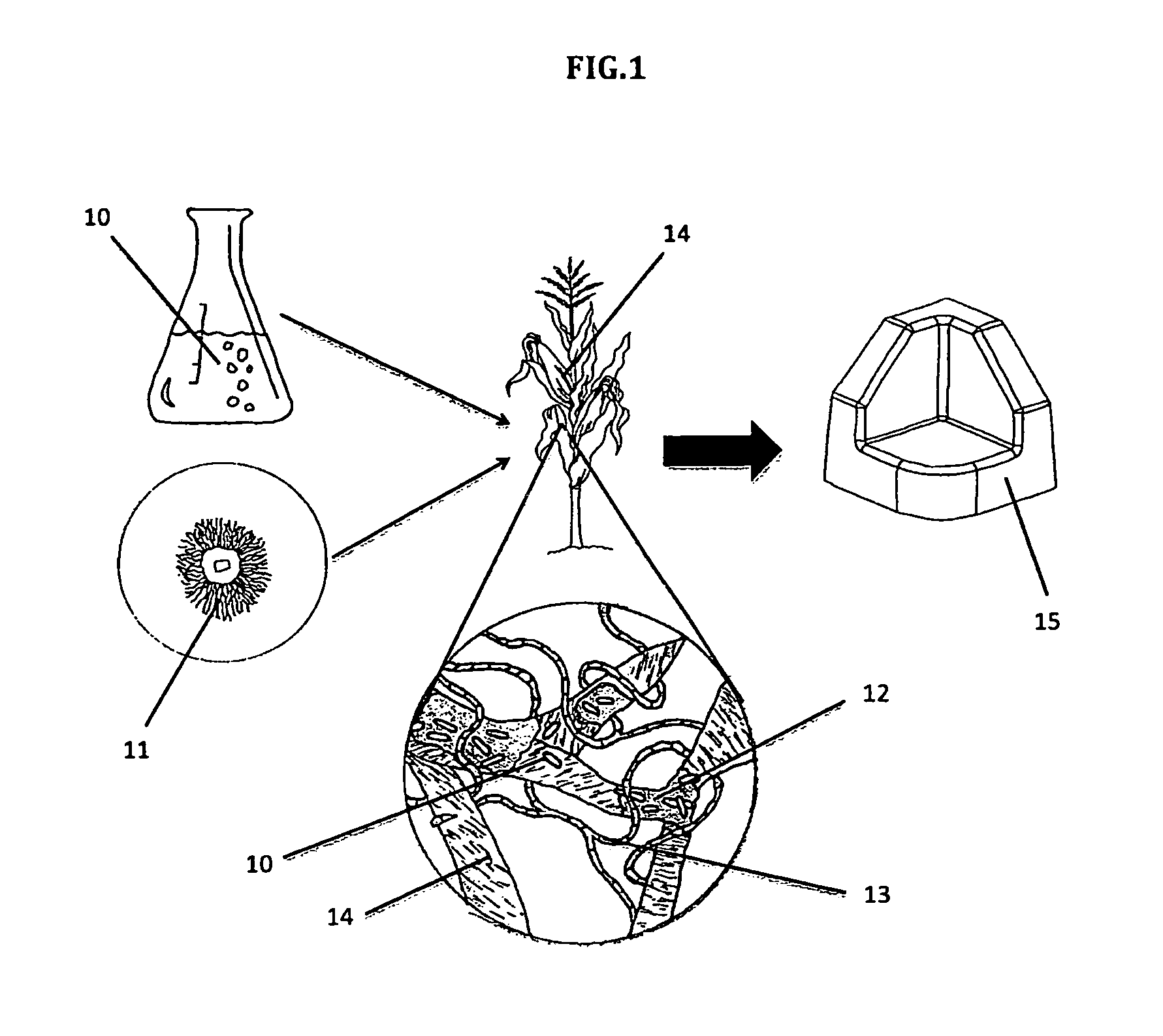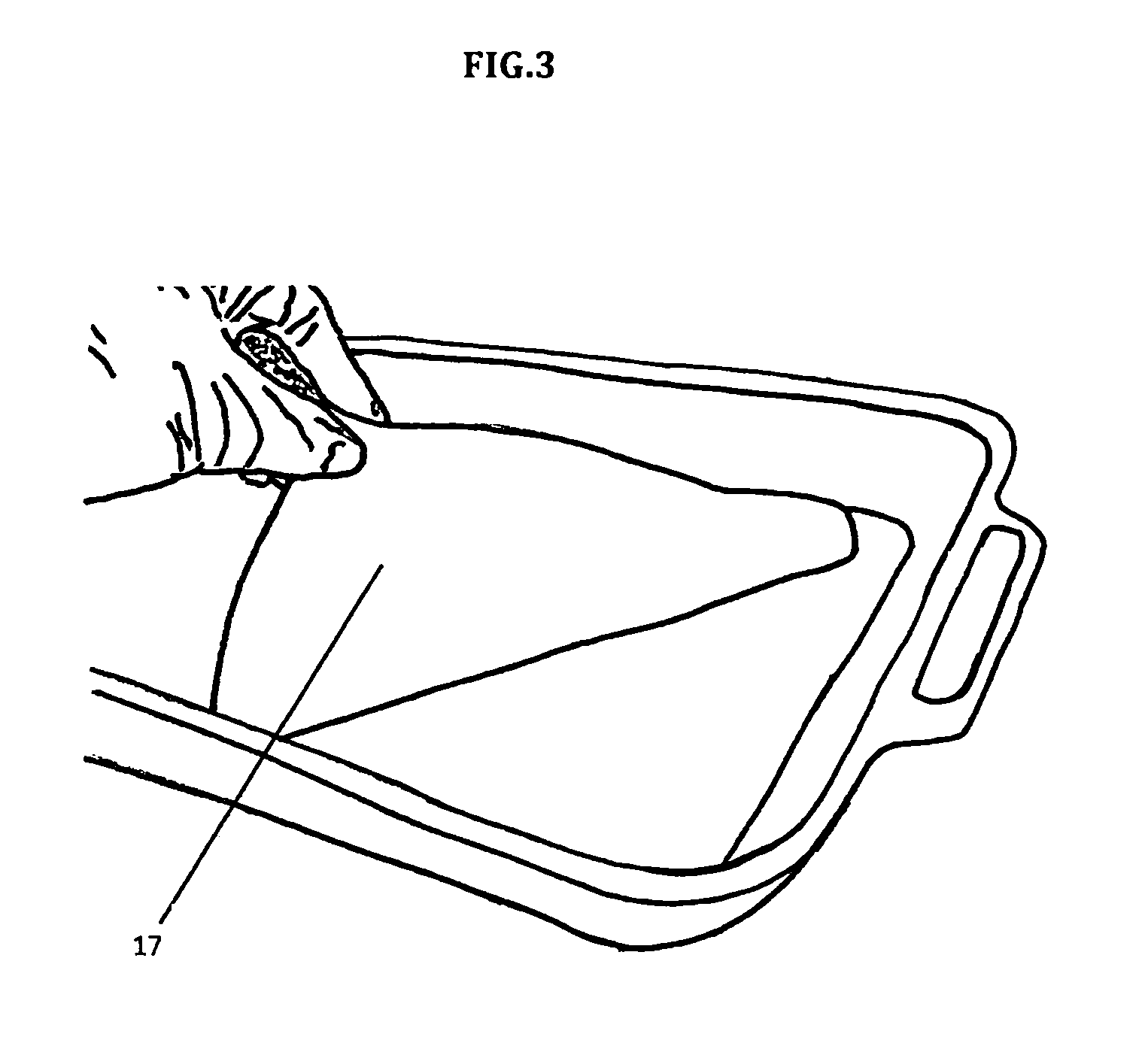Biofilm treatment of composite materials containing mycelium
a technology of mycelium and composite materials, applied in the direction of bacteria, fungi, etc., can solve the problems of reducing product yield and performance, contaminating the growth material, and reducing the yield of the produ
- Summary
- Abstract
- Description
- Claims
- Application Information
AI Technical Summary
Benefits of technology
Problems solved by technology
Method used
Image
Examples
example 2
Grow Microbial Cellulose in Vitro and Apply to Biomaterial Surfaces
[0064]a. Inoculate 200 ml of a common liquid medium used to culture bacteria, such as a buffered S&H medium, with one colony of microbial cellulose producing bacteria Acetobacter xylinus. [0065]b. Incubate culture at 30° C. for 24-96 hours to form a biofilm thereon.[0066]c. Harvest the cellulose biofilm 17 (FIG. 3)[0067]d. Apply the cellulose to the surface of partially or fully myceliated AS thereby forming a bio-film like skin.[0068]e. Allow the biomaterial to grow into the cellulose if further biofilm integration is required for material performance.[0069]f. Terminate growth of material
example 3
Grow Microbial Biofilm In Vitro and Apply within Biomaterials
[0070]a. Inoculate 200 ml of LB media with colony of biofilm producing bacteria Bacillus subtilis sp. bacteria[0071]b. Incubate culture at 37° C. until the biofilm has reached optimal qualities and quantities (24-96 hours)[0072]c. Harvest the biofilm by either direct biofilm extraction (FIG. 3), or for other biofilms that remain homogenous in the media, the entirety of the culture will be harvested.[0073]d. Mix the harvested biofilm into myceliated or non-myceliated AS.[0074]e. Hot press the material to fully bond all components.[0075]f. Terminate the growth of material.
example 4
Bacterial Antimicrobials Produced In Situ
[0076]a. Inoculate 100 ml LB media with one colony of Streptomycin natalensis. Grow culture at 37° C. to mid log phase.[0077]b. Co-inoculate 600 g AS with both bacteria (S. natalensis) and fungi (Ganoderma) species using 100 ml mid log bacteria culture, and [0078]c. Incubate co-inoculated material at room temperature for 6 days.[0079]d. Heat inactive microbial growth by desiccation.[0080]e. Material will have enhanced resistance to bio burden throughout the incubation process resulting in limited loss of product due to contaminated material.
PUM
| Property | Measurement | Unit |
|---|---|---|
| pressure | aaaaa | aaaaa |
| v/v | aaaaa | aaaaa |
| temperature | aaaaa | aaaaa |
Abstract
Description
Claims
Application Information
 Login to View More
Login to View More - R&D
- Intellectual Property
- Life Sciences
- Materials
- Tech Scout
- Unparalleled Data Quality
- Higher Quality Content
- 60% Fewer Hallucinations
Browse by: Latest US Patents, China's latest patents, Technical Efficacy Thesaurus, Application Domain, Technology Topic, Popular Technical Reports.
© 2025 PatSnap. All rights reserved.Legal|Privacy policy|Modern Slavery Act Transparency Statement|Sitemap|About US| Contact US: help@patsnap.com



